Moscow, 4 sep - ИА Neftegaz.RU. The Rome Cavalieri, A Waldorf Astoria Resort, opened its doors to international travellers in 1963 and has gained an enviable reputation as one of the Eternal City's leading hotels. Part of the prestigious brand Waldorf Astoria Hotels & Resorts, the Rome Cavalieri joins an exclusive club of properties that are simply ‘one of a kind’. Inspired by New York’s legendary Waldorf Astoria, each hotel in the growing brand has its own distinct character, timeless architecture and special history.
Location
Situated in a 15-acre private Mediterranean park, overlooking Rome and the Vatican City, the Rome Cavalieri is the only luxury city resort in Rome. Located in a prestigious residential area of Rome, just 3 km from the Vatican City and 5 km from the historic city centre and its numerous attractions Leonardo da Vinci-Fiumicino Airport (FCO) is 35 km away and Pastine-Ciampino Airport (CIA) 44 km.
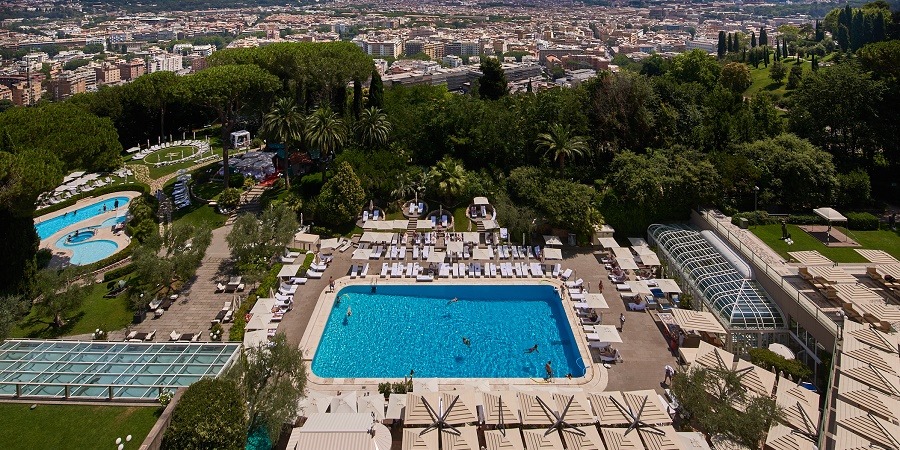
Guest rooms
345 spacious, 42m² deluxe rooms, with 8 m² private balcony 25 luxurious suites ranging from 80 - 450 m² in size, individually decorated and styled to showcase valuable antique furniture and paintings – a true inspirational environment. Penthouse and Planetarium Suites offer private 200m² terraces with hot tubs and breathtaking views of the Eternal City and St. Peter’s Basilica. Guests staying in suites or Imperial Rooms have access to the Imperial Club, offering private VIP check in/ check out, complimentary breakfast, finger food, afternoon tea as well as refreshments throughout the day.
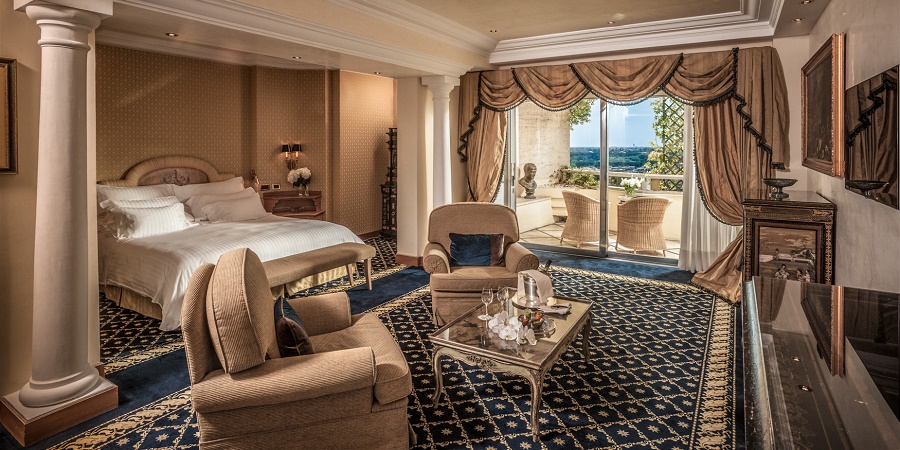
Restaurants & Bars
La Pergola Restaurant & Bar - Under the direction of celebrated chef Heinz Beck, Rome Cavalieri is the only hotel in Italy to boast a Michelin-rated three star restaurant. The stylish roof terrace offers panoramic views across the city.

Uliveto Restaurant - Overlooking the landscaped park and outdoor pool, this restaurant serves a full menu of Mediterranean and international dishes created by Executive Chef Fabio Boschero. Dessert Menu is curated by Pastry Chef Dario Nuti.
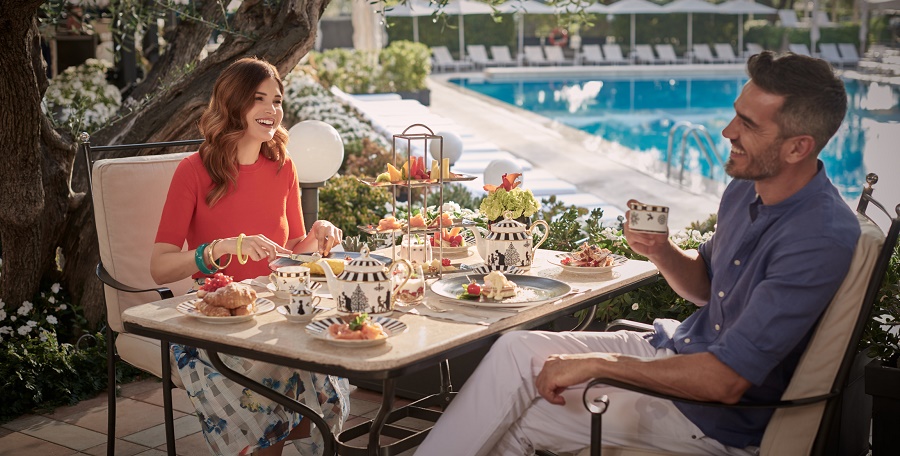
Tiepolo Lounge and Terrace - Surrounded by famous artwork, including Tiepolo’s masterpieces, the Tiepolo Lounge is the perfect rendezvous for morning coffee, light lunches, snacks and drinks. Live entertainment every evening.
Pool Bar - Located on the pool terrace, the Pool Bar is open throughout the summer season, offering a selection of refreshments and drinks, including homemade ice-cream Grand Spa Café - Offers a selection of healthy drinks and light meals, including freshly squeezed juices, herbal teas, fitness drinks, salads and fresh fruit.
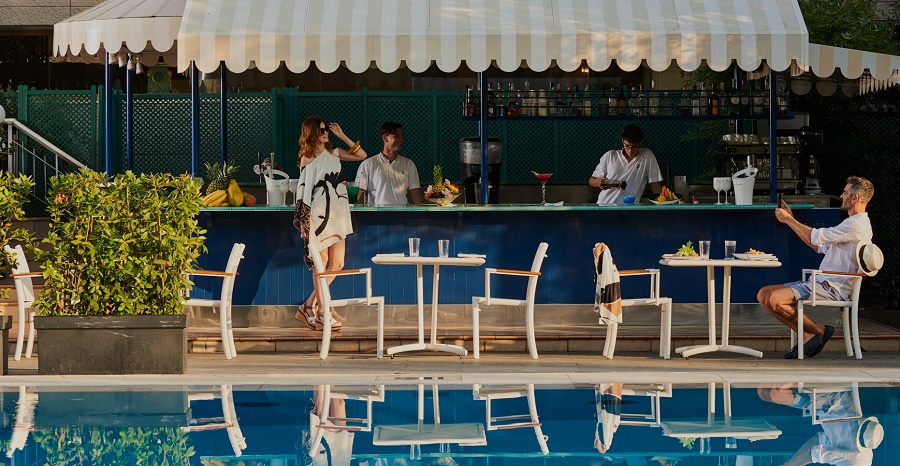
Hotel art collection
Highly prized private collection of paintings, tapestries, period furniture, statues and artefacts are exhibited throughout the hotel’s public areas and suites.

Three of Giovanni Battista Tiepolo’s most important masterpieces take pride of place in the main lobby Suites are decorated with unique pieces of artwork and furnishings, including original Karl Lagerfeld sofas, rare 18th century antiques, and Andy Warhol and Robert Indiana paintings.
The origin of the name
The Rome Cavalieri, A Waldorf Astoria Resort is situated in an area of great historical interest. Perched atop the hill of Monte Mario, which dominates the city of Rome, the Rome Cavalieri lies alongside one of the most important paths in the history of mankind: the Via Francigena, the pilgrims’ route from Canterbury in England, through France and Italy, all the way to Rome.

It is a journey through history itself, the main road travelled by thousands of pilgrims towards the Eternal City over the centuries. Pilgrims always travelled in groups and this was one of those roads teeming with merchants: a hive of buying, selling and bartering. Armies, too, marched along the road from one post to the next. Once they arrived at the walls of the Eternal City, travellers used to rest on the hill of Monte Mario and it is for this reason that the area was also commonly called “the riders’ place”, as it was usually travellers on horseback who would stop, to rest both themselves and their mounts.
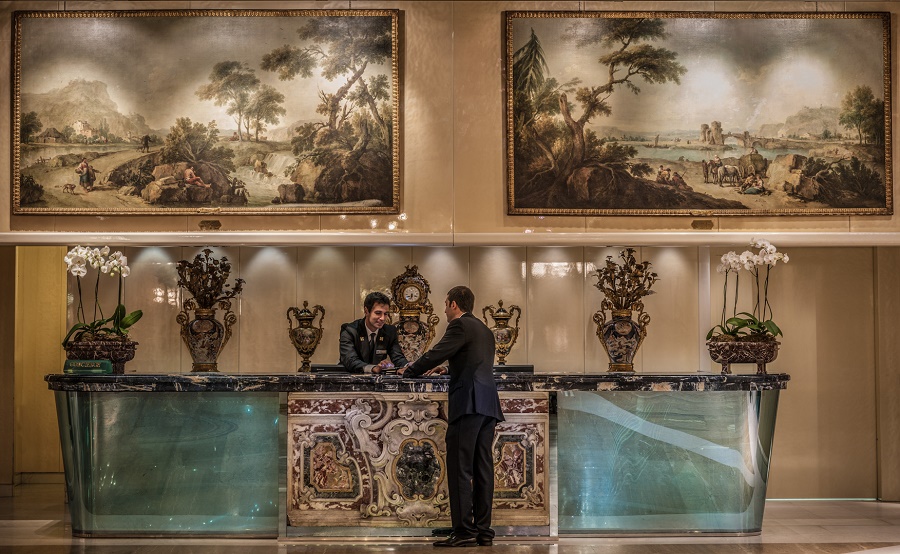
And it is as a tribute to these brave travellers of the past, who came to Rome defying danger and exhaustion, that the hotel had the word “Cavalieri” (Rider or Knight) incorporated into its name. In the surroundings of the hotel you can still see some remains of this era.
At the corner of Via Trionfale and Viale dei Cavalieri di Vittorio Veneto, there is an ancient marble trough used to quench the thirst of the horses and their weary riders. Following the route towards St. Peter’s lies an ancient hamlet consisting of a church, a post house, a handful of dwellings and a defense tower.
During the 7th-10th centuries, there was only a small chapel dedicated to St. Mary Magdalene. According to the legend, in the 12th century, a French pilgrim began to collect donations for the construction of a hospice near the chapel for sick travellers. The foundations of the hospice can be dated to 1480 after which time, and most likely owing to the hospice itself, the church’s name was changed to St. Lazarus. At the end of the 15th century this area marked the limit of the quarantine zone during pestilence and plague.
The church was heavily damaged during the 1527 Sack of Rome by invading foreign armies and was restored in 1536 by a devotee named Domenico Garrison. In the second half of the 16th century the church of St. Lazarus was elevated to the status of outpost of St. Peter’s basilica due to its strategic location and remained so until 1828. There, in the church of St. Lazarus, any Pope who had been consecrated outside of Rome, donned his mitre and cope before proceeding to St. Peter’s.
Moreover, during the Middle Ages, the church was used as the meeting place between cardinals and foreign ambassadors who came to Rome, and also future emperors of the Holy Roman Empire before their coronation at St. Peter’s. After 1828 the hospice fell into total ruin but, after recent renovations, we are once again able to visit the church.
Author: Ю. Смирнова








